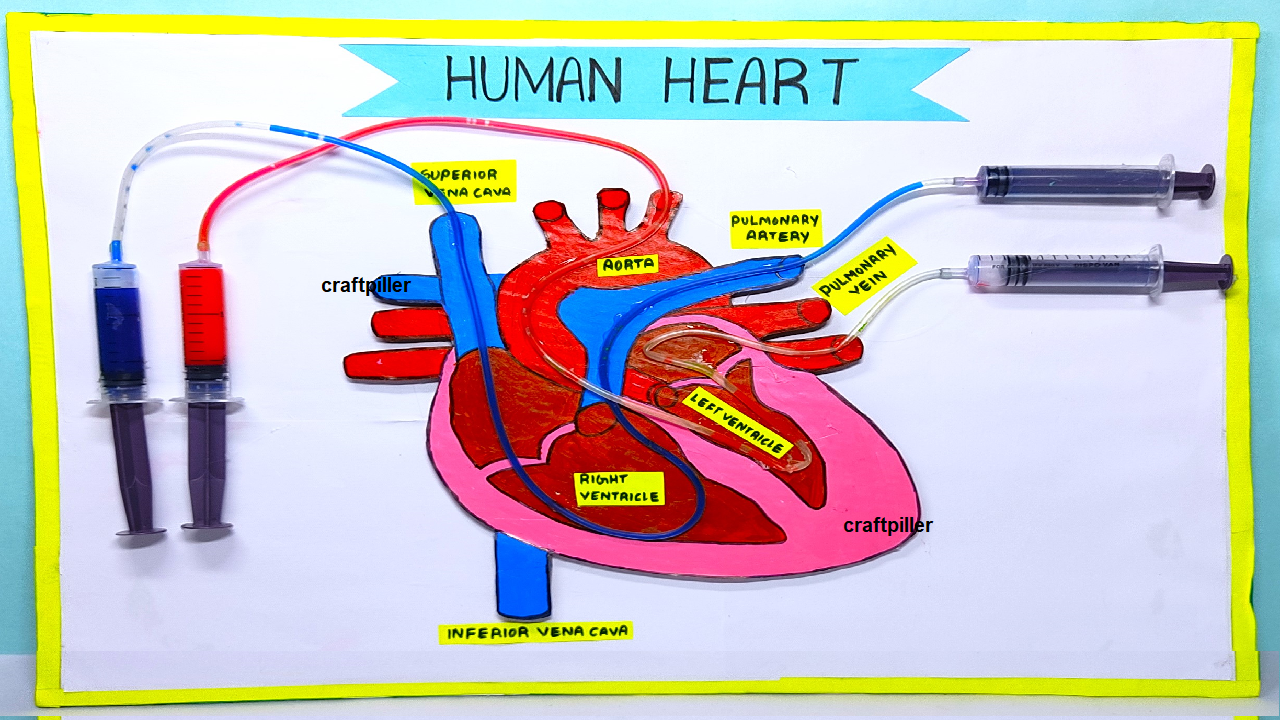
1. What is the function of the heart?
- Answer: The heart is a muscular organ that pumps blood throughout the body, supplying oxygen and nutrients to tissues and organs.
2. How many chambers does the human heart have?
- Answer: The human heart has four chambers: two atria (upper chambers) and two ventricles (lower chambers).
3. What is the purpose of the heart valves?
- Answer: Heart valves control the flow of blood between the heart chambers. They prevent blood from flowing backward.
4. What is the pacemaker of the heart?
- Answer: The sinoatrial (SA) node, located in the right atrium, serves as the natural pacemaker, initiating the electrical impulses that regulate heart rhythm.
5. What is a heart attack?
- Answer: A heart attack, or myocardial infarction, occurs when blood flow to a part of the heart muscle is blocked, usually by a blood clot.
6. What is the role of arteries in the circulatory system?
- Answer: Arteries carry oxygenated blood away from the heart to various parts of the body.
7. How do veins differ from arteries?
- Answer: Veins carry deoxygenated blood back to the heart. Unlike arteries, veins have valves to prevent blood from flowing backward.
8. What is blood pressure?
- Answer: Blood pressure is the force of blood against the walls of arteries. It is measured in millimeters of mercury (mmHg).
9. What is hypertension?
- Answer: Hypertension, or high blood pressure, is a condition where the force of blood against artery walls is consistently too high.
10. What is the purpose of the coronary arteries?
Answer: Coronary arteries supply oxygen and nutrients to the heart muscle. They are essential for heart function.
11. What is atherosclerosis?
Answer: Atherosclerosis is a condition where arteries become narrowed and hardened due to the buildup of plaque, consisting of cholesterol, fats, and other substances.
12. What is the function of the left ventricle?
Answer: The left ventricle pumps oxygenated blood to the rest of the body.
13. What is the medical term for a rapid heartbeat?
Answer: Tachycardia is the medical term for a rapid heartbeat, usually defined as a heart rate exceeding 100 beats per minute.
14. What is the medical term for a slow heartbeat?
Answer: Bradycardia is the medical term for a slow heartbeat, typically defined as a heart rate less than 60 beats per minute.
15. What is congestive heart failure?
Answer: Congestive heart failure occurs when the heart is unable to pump blood effectively, leading to a buildup of fluid in the lungs and other tissues.
16. What is the purpose of the pericardium?
Answer: The pericardium is a double-layered membrane that surrounds and protects the heart, providing lubrication for smooth movement.
17. What is an ECG or EKG?
Answer: An electrocardiogram (ECG or EKG) is a test that records the electrical activity of the heart over a period, providing information about heart rate and rhythm.
18. What is the cardiac cycle?
Answer: The cardiac cycle is a series of events that occur during one heartbeat, including systole (contraction) and diastole (relaxation) of the heart chambers.
19. What is the purpose of the mitral valve?
Answer: The mitral valve regulates blood flow between the left atrium and left ventricle.
20. What is a coronary angiogram?
Answer: A coronary angiogram is a diagnostic procedure that uses X-rays to visualize blood vessels in the heart, helping to identify blockages or abnormalities.
21. What is an arrhythmia?
Answer: An arrhythmia is an abnormal heart rhythm, which can be too fast (tachycardia), too slow (bradycardia), or irregular.
22. What is the significance of cholesterol in heart health?
Answer: High levels of cholesterol can lead to atherosclerosis and increase the risk of heart disease.
23. What is the purpose of CPR (Cardiopulmonary Resuscitation)?
Answer: CPR is a life-saving technique that combines chest compressions and rescue breathing to maintain blood flow and oxygenation during cardiac arrest.
24. What is a heart murmur?
Answer: A heart murmur is an abnormal sound produced by turbulent blood flow through the heart valves. It can be harmless or indicate an underlying issue.
25. How can lifestyle choices impact heart health?
Answer: Healthy lifestyle choices, including a balanced diet, regular exercise, not smoking, and managing stress, play a crucial role in maintaining heart health and preventing cardiovascular diseases.

